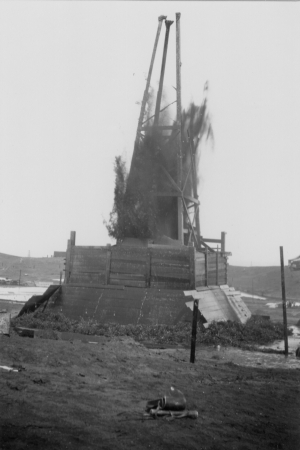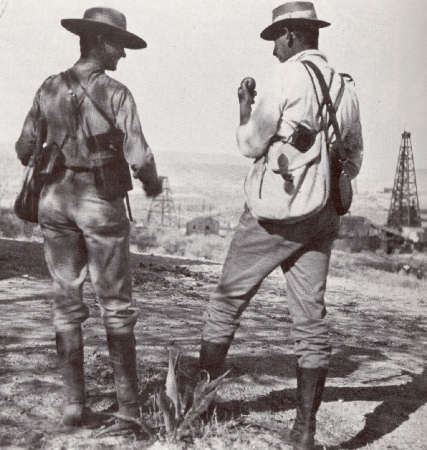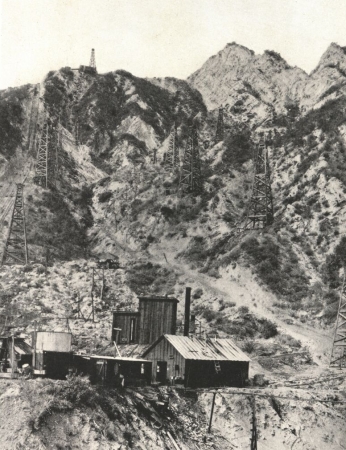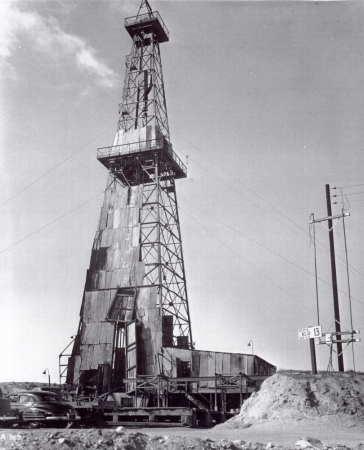
One attempt to control the Lakeview Gusher in 1910 was to drag a giant box of timbers over the blowout, but the force of the spout simply blew the box apart. |

Geologists Ralph Arnold and Harry Johnson of the USGS studying McKittrick Oil Field in 1908. These men, together with Robert Anderson, formalized much of the stratigraphic nomenclature for the San Joaquin Valley. |

Wooden oil derricks in the late 1800s in the Sespe River Canyon near Fillmore, California. Discovered between 1877 and 1901 in the mountains between the San Joaquin and Ventura basins, the Sespe exhibit more topographic relief than any field in North America. |

When it was drilled at South Coles Levee field to a depth of 16,246 ft in 1946, the Standard KCL 20-13 was the deepest oil well in the world. Seven years later the record went to the Richfield 67-29 that reached 17,895 ft at nearby North Coles Levee field. The 67-29 was also the deepest producing well at the time. |